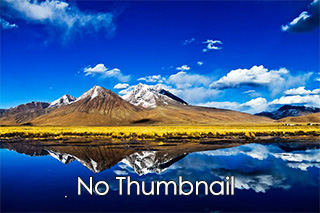Landuse/landcover data of the Heihe River Basin in 2000

The Landuse/Landcover data of the Heihe River Basin in 2000 ( newly compiled in 2012), was finished by the Remote Sensing Laboratory of Cold and Arid Regions Environmental and Engineering Research Institute, Chinese Academy of Sciences, using satellite remote sensing, based on the LandsaTM and ETM remote sensing data around 2000, combing field investigation and verification, thus leading to the establishment of the Heihe River Basin 1:10. 10,000 land use/land cover imagery and vector database. The main contents are: 1:100,000 land use graphic data and attribute data in the Heihe River Basin.
The Heihe River Basin 1:100,000 (2011) land cover data and the previous land cover data use the same layered land cover classification system, the whole basin is divided into six first-class categories (cultivated land, woodland, grassland, waters, urban and rural residents, industrial and mining land and unused land), 25 secondary classes; data types are vector polygons, stored as Shape format. Land cover classification attributes:
Primary type, secondary type, attribute coding, spatial distribution position
Cultivated land:
Plain dry land, 123, is mainly distributed in basin, Piedmont zone, river alluvial, diluvial plain or lacustrine plain (lack of water, irrigation condition is poor).
Hilly dry land, 122, is mainly distributed in Hilly areas. Generally speaking, land blocks distribute on gentle slopes, ridges and mats of hills.
Mountainous dry land, 121, is mainly distributed in mountainous areas, with the elevation below 4000 meters (gentle slope, mountainside, steep slope platform, etc.) and the Piedmont zones.
Woodland:
There is woodland (arbor), 21, is mainly distributed in the mountains (below 4000 meters ) or on the slopes of the mountains, valleys, hills, plains and so on.
Shrub land, 22, is mainly distributed in higher mountain areas (below 4500 meters), most of which distribute in hillsides, valleys and sandy land.
Sparse forest land, 23, is mainly distributed in the mountains, hills, plains and sandy land, and on the edge of the Gobi (loam, gravel).
Other woodlands, 24, are mainly distributed in the oasis field, around rivers, roadsides and rural settlements.
Grassland:
Highly covered grassland, 31, is mainly distributed in mountainous areas (slow slopes), hills (steep slopes) and inter-river beaches, Gobi, sand dunes, etc.
Mid-covered grassland, 32, is mainly distributed in relatively dry areas (Gobi, low-lying land and sandy land,sand dunes, etc.).
The low-cover grassland, 33, grows mainly in drier areas (on the loess hills and on the edge of the sand).
Waters:
Channel, 41 is mainly distributed in plains, inter-river cultivated land and inter-mountain valleys.
Lake, 42, is mainly distributed in low-lying areas.
Reservoir pit, 43, is mainly distributed in plains and valleys between rivers, surrounded by residential areas and cultivated land.
Glacier and permanent snow cover, 44, mainly distribute at the top of (over 4000) alpine regions.
Flood land, 46, is mainly distributed in the high and low hillside gullies, the piedmont, the plain lowlands, and the edge of the river and lake basins.
Residents land:
Urban land, 51, is mainly distributed in plains, mountain basins, slopes and valleys.
Rural residential land, 52, are mainly distributed in oases, cultivated land and roadsides, on the tablelands and the slopes.
Industrial land and traffic land, 53, are generally distributed in the periphery of towns, areas with fairly developed transportation and industrial mining areas.
Unutilized land:
Sandy land, 61, is mostly distributed in the basin, on both sides of the river, in the river bay and on the periphery of the Piedmont and Gobi.
Gobi, 62, is mainly distributed in the Piedmont belt with strong wind erosion and sediment transport.
Saline and alkaline land, 63, is mainly distributed in dry lakes, lakeside and areas relatively low with easy water accumulation.
Swamp, 64, is mainly distributed in relatively low areas with easy water accumulation.
Bare soil, 65, is mainly distributed in arid areas (steep hillsides, hills and gobi), with vegetation coverage less than 5%.
Bare rock, 66, is mainly distributed in extremely arid rocky mountainous areas (windy and rainless).
The other, 67 mainly distributes in bare rocks formed by freezing and thawing above 4000 meters, also known as alpine tundra.
Data Citations
Cite as:Wang, J. (2015). < b>Landuse/landcover data of the Heihe River Basin in 2000</b>2015. doi: 10.3972/heihe.039.2014.db. (Download the reference: RIS | Bibtex )
Using this data, the data citation is required to be referenced and the related literatures are suggested to be cited.
Terms of Use
To respect the intellectual property rights, protect the rights of data authors, expand services of the data center, and evaluate the application potential of data, data users should clearly indicate the source of the data and the author of the data in the research results generated by using the data (including published papers, articles, data products, and unpublished research reports, data products and other results). For re-posting (second or multiple releases) data, the author must also indicate the source of the original data.
Support Program
Related Resources
1.Scenario analysis of social and economic development over Heihe River Basin (2020 & 2030)
2.Datasets for the SWAT model in Heihe Rriver Basin
3.A survey construction of a water-saving society in Zhangye city, Gansu (2013)
4.Leaf area index of Qinhai spruce stand at 2800 m above sea level in Pailougou watershed (2011)
6.Input output table of Heihe River Basin in Gansu Province in 2002 and 2007
8.The data of desert plants photosynthetic organ traits (2011)
10.Macro index data of social economy at city (county) scale in Heihe River Basin
No record
No record
Comments
Sign In to add comments
Keywords
Geographic coverage
| Spatial coverage |
East:104.2 South:37.7 |
West:96.1 North:43.3 |
|---|
Details
- Format: shp
- File size: 255.82 MB
- Browse count:16009
- Temporal coverage:2018-12-06 To 2018-12-06
- Access: Offline
- Updated time:2021-04-19
Authors
Resource Provider: WANG Jianhua

 Copyright ©right; 2017 - 中国科学院西北生态环境资源研究院 - 兰州数云软件科技有限公司提供技术支持
Copyright ©right; 2017 - 中国科学院西北生态环境资源研究院 - 兰州数云软件科技有限公司提供技术支持